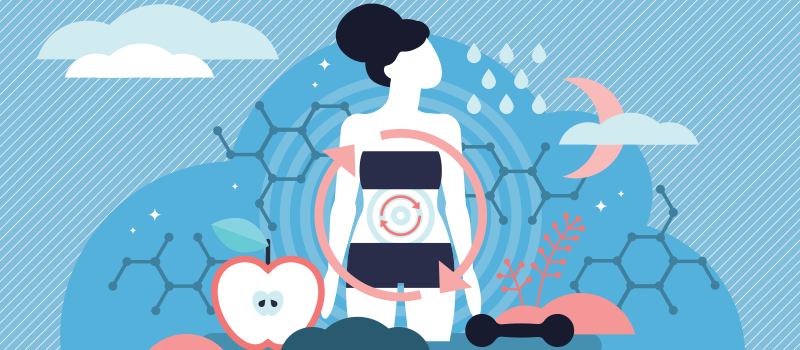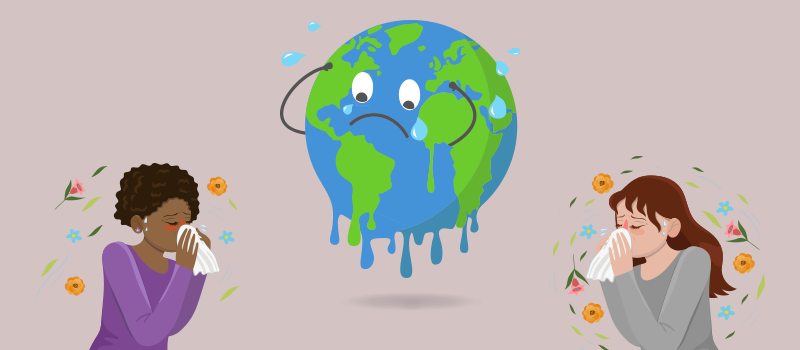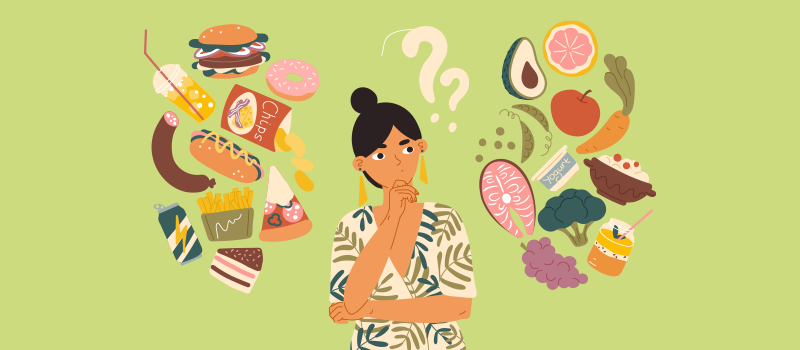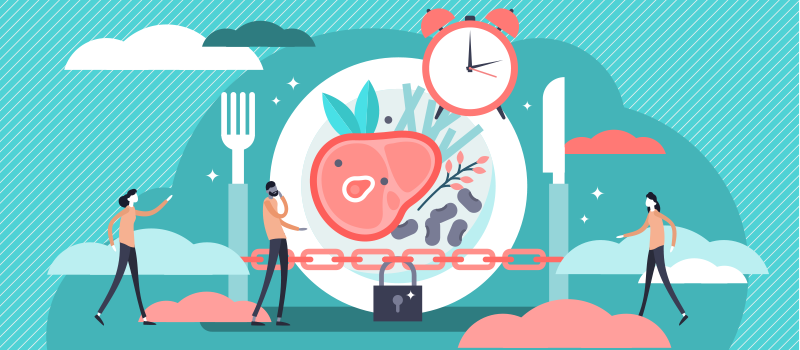4 Benefits of a Gluten-Free Diet

You may have heard about gluten-free diets and might be wondering if they are a healthy choice. Please keep reading to learn more about the benefits and risks of a gluten-free diet.
What is gluten?
Gluten is a general term for a protein found in grains like wheat, barley, and rye. It acts as a glue, holding these foods together and helping them keep their shape.
What are gluten intolerance, celiac disease, and wheat allergy?
Celiac Disease
Celiac disease, also called celiac sprue or gluten-sensitive enteropathy, is an autoimmune disease. Like other autoimmune disorders, it occurs because of an abnormal immune reaction. People with celiac disease suffer damage to the lining of the small intestine if they eat gluten-containing foods.
This disease leads to symptoms like gas, bloating, stomach pain, nausea, vomiting, diarrhea, constipation, weight loss, fatigue, anemia, and other serious health complications due to malabsorption (inability to absorb nutrients from food).
If you have been diagnosed with celiac disease, your healthcare provider may advise you to eat a strict gluten-free diet for life to have fewer symptoms and complications.
Non-Celiac Gluten Sensitivity
Non-celiac gluten sensitivity is also called gluten intolerance. It is a type of food intolerance in which you feel sick after consuming gluten. Symptoms can include bloating, gas, and fatigue.
However, this condition is not the same as celiac disease. In people with non-celiac gluten sensitivity, there is no damage to the intestines, and this condition may not be lifelong. Some people with gluten sensitivity are able to start eating gluten-containing foods after following a gluten-free diet for 1-2 years.
Gluten Ataxia
Gluten Ataxia is an autoimmune disease in which gluten causes nerve damage and problems with voluntary muscle movements.
Wheat Allergy
A wheat allergy is also an abnormal immune system reaction. However, it is different from celiac disease and non-celiac gluten sensitivity. In people with a wheat allergy, the body produces antibodies to proteins found in wheat. When such individuals eat wheat, they develop allergic signs and symptoms such as rash, hives, swelling of the throat, difficulty breathing, anaphylaxis (throat closing), nausea, cramps, diarrhea, or headache within minutes to hours of consuming wheat.
Is it healthier to eat a gluten-free diet?
There are claims that avoiding gluten has health benefits. For example, a gluten-free diet may:
- Help you lose weight
- Improve gastrointestinal health
- Boost athletic performance
- Improve overall general health
However, there is no strong scientific evidence that if healthy people eliminate gluten from their diets, it can lead to weight loss, improved gastrointestinal or general health, or better athletic performance.
It is possible that in some people with undiagnosed celiac disease or gluten sensitivities, eating gluten-free foods may lead to an improvement in symptoms and overall health.
What happens when you stop eating gluten?
If you have celiac disease or non-celiac gluten sensitivity, you will likely experience an improvement in your symptoms after you stop eating gluten. However, going gluten-free may not make any noticeable difference if you do not have these conditions.
What are some gluten-containing grains?
Gluten-containing grains to avoid if you have celiac disease or gluten sensitivity include wheat, barley, rye, triticale (a cross between rye and wheat), and oats that may be contaminated with wheat and rye.
It is worth noting that different wheat varieties are sold under other names, and all contain gluten. For example, durum, emmer, einkorn, spelt, and kamut. In addition, wheat is sold under different names based on how it is processed. So, in addition to whole wheat flour, you must also avoid enriched flour, self-raising flour, semolina, farina, and Graham flour if you don’t want to consume gluten.
Moreover, remember that many highly-processed foods such as cakes, cookies, candies, pies, cereals, breads, pastas, imitation meats, salad dressings, sauces like soy sauce, and snack foods also contain gluten.
People with celiac disease who are trying to avoid gluten should read food labels carefully and only choose gluten-free products labeled as such.
What are some gluten-free foods?
Food manufacturers can label their products as gluten-free if they contain fewer than 20 parts per million of gluten. These include naturally gluten-free foods, foods prepared without gluten-containing ingredients, foods that have not been cross-contaminated with gluten-containing ingredients, and foods that have been processed to remove gluten.
Gluten-free grains
Grains that can be included as part of a gluten-free diet include buckwheat, corn, amaranth, arrowroot, rice, quinoa, millet, soy, sorghum, teff, tapioca, and potato flour. You can get gluten-free breads and other gluten-free products made from these grains and flours.
Other naturally gluten-free foods
Some nutritious foods that are naturally gluten-free include fruits, vegetables, legumes, beans, nuts, seeds, eggs, low-fat dairy products, and lean meats (fish and poultry).
How to go about eliminating gluten from your diet?
Removing gluten involves eating naturally gluten-free foods or foods made with gluten-free ingredients. This is usually sufficient to control symptoms in most people with gluten sensitivities. However, some people with celiac disease cannot tolerate gluten at all, including oats labeled gluten-free and processed in factories where they take special measures to avoid cross-contamination. Therefore, in addition to following a gluten-free diet, those with severe celiac disease may need to:
- Store gluten-containing and gluten-free foods separately.
- Use separate cooking utensils.
- Wash cooking equipment and dishes thoroughly.
- Consider separate toasters for gluten-containing and gluten-free bread.
What are the downsides of a gluten-free diet?
Once healthcare providers diagnose celiac disease, going gluten-free becomes a lifelong necessity. Avoiding gluten can also help to alleviate symptoms in people with gluten sensitivities.
However, following a gluten-free diet can put you at risk of nutrient deficiencies. This is because a gluten-containing diet is healthy and includes many foods that are good sources of essential nutrients like iron, calcium, B vitamins, and dietary fiber.
Additionally, some gluten-free diets have higher fat and sugar content, which can be detrimental to your overall health. Keep in mind that a gluten-free diet is not necessarily a low-carb diet because many common gluten-free foods have a high content of refined carbohydrates.
It is also worth noting that some studies have found that gluten-free diets can increase the risk of chronic diseases and lead to weight gain.
Another thing to keep in mind is the cost of choosing a gluten-free diet. Many gluten-free options are more expensive than their gluten-containing counterparts.
If you decide to go gluten-free, discuss it with your healthcare provider first. They may recommend dietary supplements to prevent nutritional deficiencies.
References:
- https://celiac.org/gluten-free-living/what-is-gluten/
- https://www.mayoclinic.org/diseases-conditions/celiac-disease/symptoms-causes/syc-20352220#
- https://my.clevelandclinic.org/health/diseases/21622-gluten-intolerance#:
- https://www.mayoclinic.org/diseases-conditions/wheat-allergy/symptoms-causes/syc-20378897#
- https://www.mayoclinic.org/healthy-lifestyle/nutrition-and-healthy-eating/in-depth/gluten-free-diet/art-20048530
- https://www.hsph.harvard.edu/nutritionsource/healthy-weight/diet-reviews/gluten-free-diet-weight-loss/#












SOCIAL